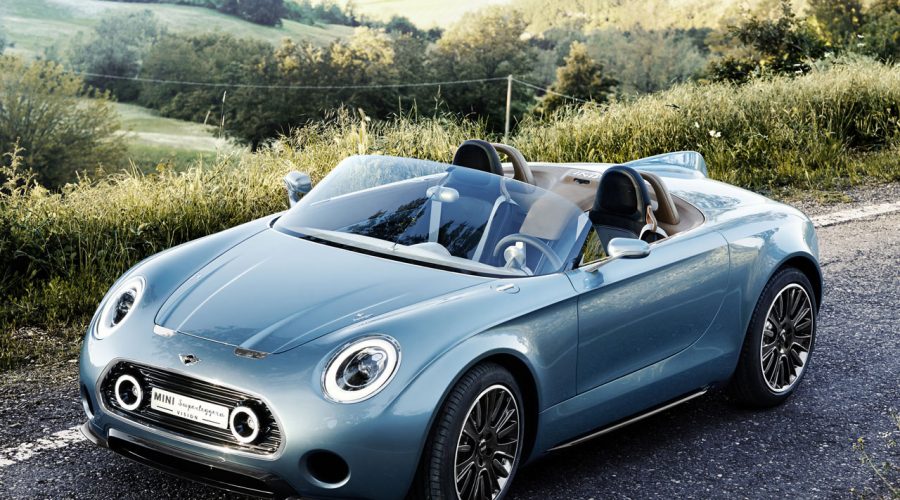For a few years now Mini has been talking about replacing its slow-selling Coupe and Roadster models with a more aggressive
 |
standalone sports car that can take on the popular Mazda MX-5. Now, in cooperation with Italian design house and coachbuilder Touring Superleggera, Mini has revealed a stunning concept that may offer a sneak peak at the new sports car.
The Mini Superleggera Vision, which will debut at the Concorso d’Eleganza Villa d’Este 2014, combines classically elegant Italian lines with familiar Mini design cues to create a car with timeless aesthetic appeal.
"It elegantly perpetuates what the Classic Mini started 55 years ago: reduction to the essentials," explains Anders Warming, Head of Mini Design. "Its energetic, minimalistic design embodies the dynamic essence of an automobile."
Construction
 |
of the one-off Superleggera Vision Concept was undertaken using classic coachbuilding techniques, with large sheets of aluminum shaped by hand to create a car with tight, seamless surfaces and very few body gaps. Inside, the Superleggera Vision Concept uses unpainted aluminum surfaces and natural leather to create an elegant, minimalist ambience focused on driving. Underpinning it all is a thoroughly modern all-electric powertrain.
“Mini and Touring Superleggera both believe that proportions are the key factor of beauty, and share the same values of essentiality and innovation” said Louis de Fabribeckers, Head of design of Touring Superleggera. “In this car all unnecessary equipment or decoration is sacrificed, as performance is gained through lightness and efficiency of the bodywork and interior. The Italian touch is in the proportions and the typical waistline.”
Mini provided no hints as to if or when it might consider producing a sports car like the Superleggera Vision Concept, but one thing seems certain: If the production model is anywhere near as striking and evocative-looking as the Concept, it should be standout sales winner.
©(Copyright Canadian Auto Press)







